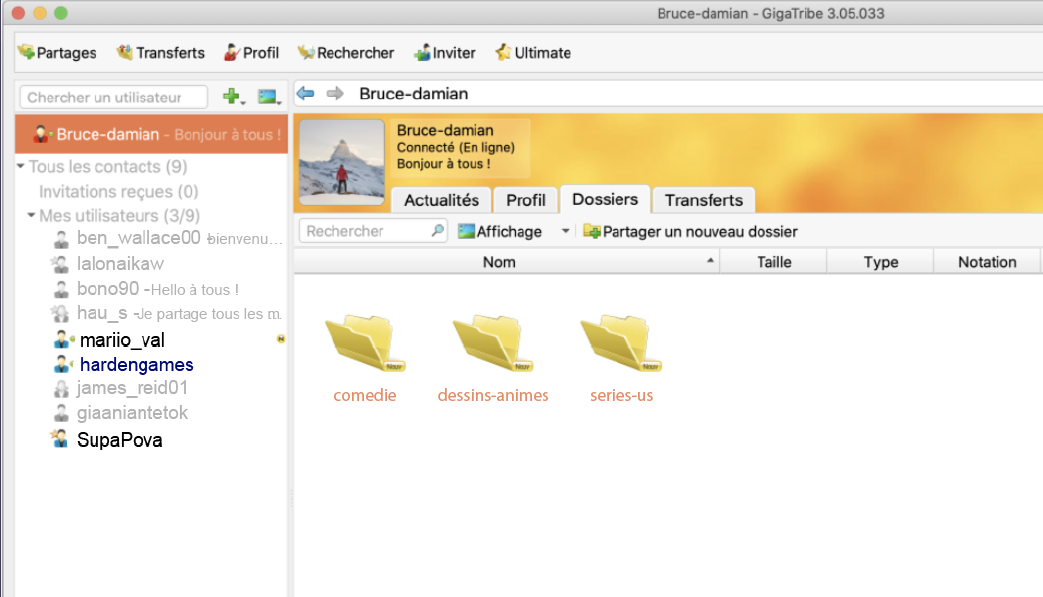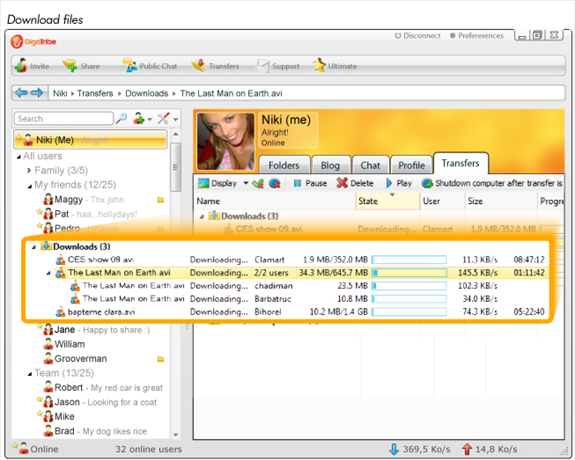

This program comes with a blog, which means that you can easily create posts with your thoughts and choose which groups are allowed to see them.

Create a blog, chat with contacts and browse folders Later on you can add information to your profile, such as name, description, country, sex, age, hobbies, music and movies, as well as upload a picture (e.g. Create an account and edit your profileįirst and foremost, you should keep in mind that you are required to create an account, yet there is no reason to panic, as it does not take very long.
#MY GIGATRIBE HOW TO#
These items paired with the intuitive UI make it possible for all types of users to easily learn how to use Giga Tribe. Tutorials and other Help documentation can be found on the developer’s website. It encloses a tabbed pane which enables you to easily access all the available options, a few buttons and a pane in which you can easily view all your contacts. The installation process does pot any kind of issues, while the interface you come across can only be described as modern and well-organized. Tabbed layout and extensive documentation

#MY GIGATRIBE SOFTWARE#
This script was developed for use in EnCase training.Giga Tribe is a software solution that provides users with a simple means of sharing files with others through a P2P network.
#MY GIGATRIBE OFFLINE#
At the time of writing this the GigaTribe servers are located in France the timestamps of offline message should reflect this.

Note that the timestamp of an offline message relates to when that message was received by the GigaTribe server it is stored as local-time and presented as such by the script. Output is by way of bookmarking and a tab-delimted spreadsheet-file. This list can be copied and pasted into the sender-ID list-box the next time the script is executed. In order to make this process a little easier, the script provides the option of generating a list of unique recipient IDs, which it will gather at the time of processing and write to a note bookmark in the root bookmark folder. The script can then be run again using those recipient IDs as sender IDs. To overcome this problem it may be necessary to run the script once in order to determine the recipient IDs of GigaTribe users to which the local user has sent messages. It should be fairly easy to identify the GigaTribe ID of the local user by examining his/her Gigatribe Registry settings and then using the script to identify messages that he/she sent, it's the identification of messages sent to the local user that is the difficult bit. The requirement to provide the sender ID may prove tricky when trying to locate messages both sent-from and received-by the local user. Without this information, the script would encounter many false hits and most likely crash whilst attempting to parse them. Taking this into account, the script needs to know the IDs of the GigaTribe users that have sent the messages that the examiner is interested in. The reason for this is that individual chat records don't have a static signature - they consist almost entirely of variable data. Keyword searching can be used to search areas such as unallocated clusters but this is much more difficult than parsing a complete chat-file. If the examiner chooses the first option then any entry being parsed will be checked for the proper chat-log signature, which is currently the characters 'ch' followed by the value 0x0a (stored as a 4-byte Big-Endian integer value) and then the version string '1.0.1'. The script can either treat the entries being parsed as GigaTribe chat-log files alternatively it can search said entries for chat messages using a keyword search. Locates and parses chat records originating from GigaTribe V3 chat-log files.


 0 kommentar(er)
0 kommentar(er)
